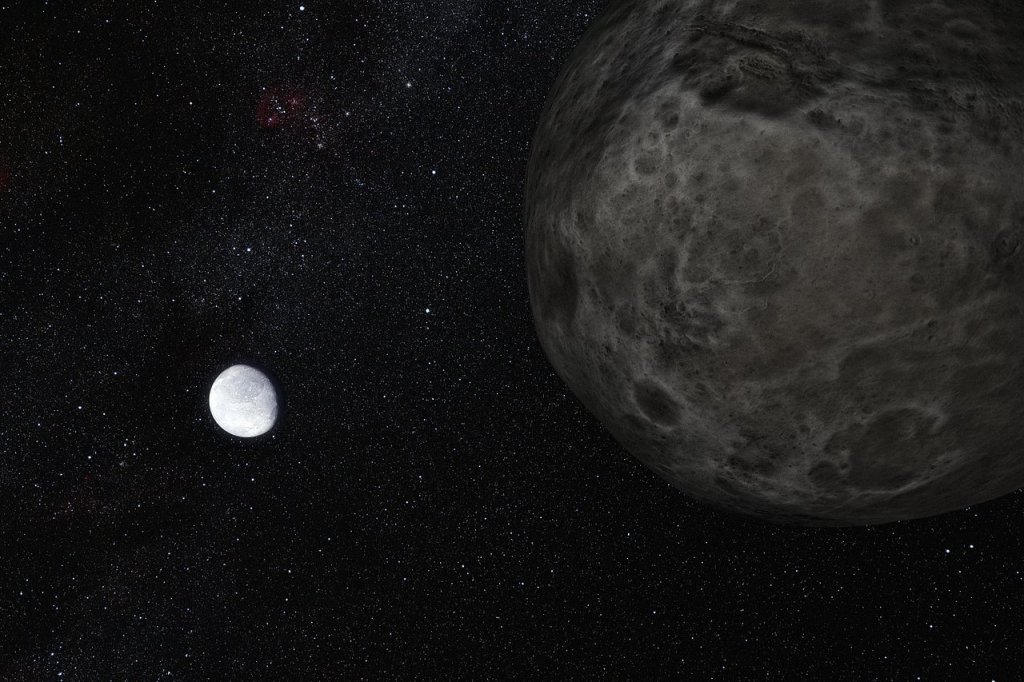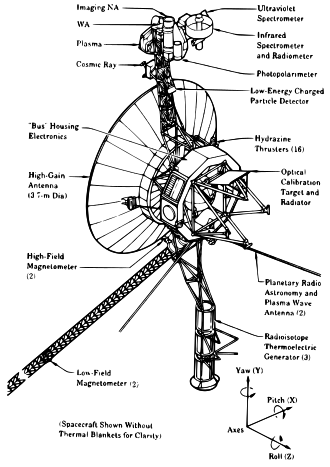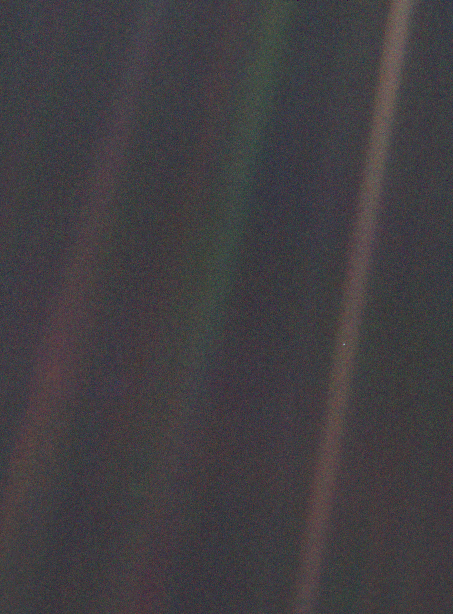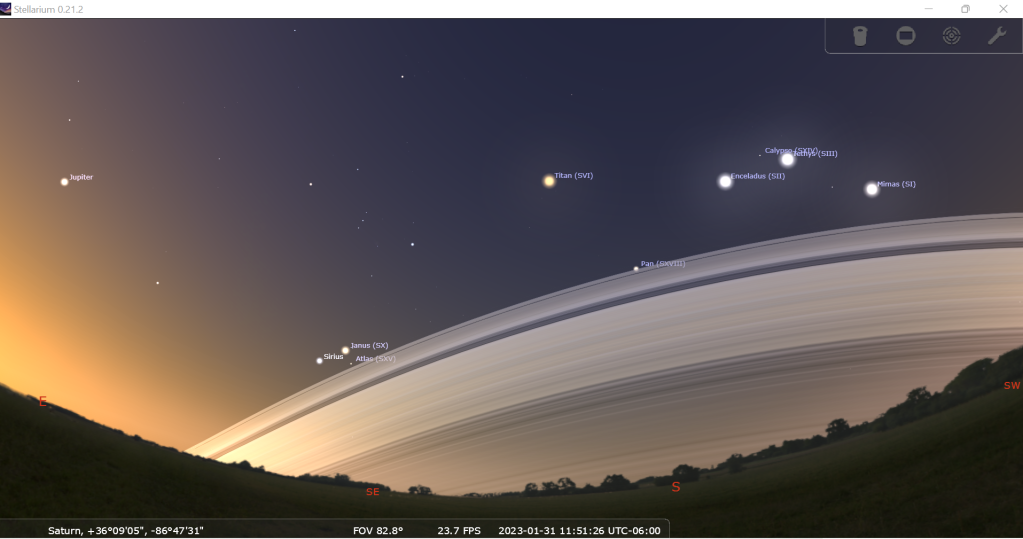-
Fast Radio Bursts

Figure: The first detected FRB in 2006. Source: Wikipedia Fast radio bursts, or FRBs, are a phenomenon in astrophysics that has captivated researchers since their discovery in 2007. These are short-lived but extremely powerful bursts of radio waves that originate from far beyond our own galaxy. The duration of these bursts is typically measured in milliseconds, but during that time, they can emit as much energy as the Sun does in an entire day. Despite being observed for over a decade, the origins of FRBs remain a mystery, and astronomers are still working to understand their nature and the implications they may have for our understanding of the universe. The first FRB was discovered in 2007 by Duncan Lorimer and his team at West Virginia University. It was dubbed the “Lorimer Burst” and was initially believed to be a one-time event. However, subsequent observations showed that FRBs were not isolated incidents and that they occur frequently throughout the universe.

Figure: Possibility of Fast Radio Burst being related to aliens. Source: New Scientist One theory about the origin of FRBs is that they are produced by highly energetic cosmic events, such as the collision of two neutron stars or the explosion of a supernova. Another possibility is that FRBs could be caused by magnetars, which are highly magnetic neutron stars that produce intense bursts of X-rays and gamma rays. However, these theories do not fully explain the properties of FRBs, such as their extreme brightness and the fact that they seem to come from random locations in the sky. Another possibility is that FRBs could be a result of alien technology, specifically, the use of powerful transmissions by extraterrestrial civilizations. The idea of using radio waves to communicate with other intelligent life forms has been explored by humans since the early days of radio communication. Therefore, the possibility that other civilizations in the universe may be using similar methods to communicate cannot be ruled out entirely.
Regardless of their origins, the study of FRBs has the potential to significantly impact our understanding of the universe. One of the most exciting developments in the field of FRB research has been the discovery of repeating FRBs. These are bursts that occur at regular intervals, indicating that they are not just one-time events. The first repeating FRB was discovered in 2016, and since then, several others have been detected. Repeating FRBs has allowed scientists to study them more closely and has led to new insights into their properties. For example, in 2020, researchers were able to detect a repeating FRB from a source within our own galaxy for the first time. This discovery has provided new clues about the nature of FRBs and suggests that they may be more common than previously believed.
-
“Where is everybody?”
The Fermi Paradox has puzzled scientists and philosophers for over half a century. It is named after Enrico Fermi, the Italian American physicist who, during a lunchtime conversation in 1950, asked, “Where is everybody?” Fermi was referring to the apparent contradiction between the high probability of the existence of intelligent extraterrestrial life and the lack of evidence for it. Despite decades of research and numerous attempts to detect extraterrestrial life, we have yet to find any definitive proof of its existence, and the Fermi Paradox remains one of the most perplexing mysteries of modern science. One possible explanation for the Fermi Paradox is the idea that advanced civilizations may be too far away from us to detect or communicate with, given the vast distances between stars and galaxies. This is known as the “Great Filter” hypothesis. According to this theory, there may be a set of barriers that prevent life from reaching the stage of advanced technological development required for interstellar travel and communication. These barriers could include catastrophic events such as asteroid impacts or supernovae, or more complex factors such as social or environmental constraints. Another hypothesis that has been put forward is that intelligent life may be exceedingly rare in the universe, a concept known as the “Rare Earth” theory. According to this idea, the development of complex life is the result of a series of unlikely events, such as the formation of a stable planetary system, the presence of a large moon to stabilize the planet’s orbit, and the existence of a magnetic field to protect the planet from harmful radiation. These factors may be so rare that they only occur in a few locations in the universe, making the emergence of intelligent life a rare and unlikely event.

Figure: Zoo hypothesis may explain why we can’t see aliens. Source: SETI Some scientists have suggested that advanced civilizations may be deliberately avoiding contact with us, a concept known as the “Zoo Hypothesis.” This theory proposes that extraterrestrial civilizations are observing us but have made a conscious decision not to interact with us. This could be due to the fear of hostile or dangerous aliens, the belief that interacting with other species could be harmful to their own development, or simply a desire to maintain the natural order of the universe. Alternatively, it is possible that extraterrestrial life could exist in forms that are vastly different from what we consider to be life. The concept of “non-biological intelligence” suggests that intelligent life could emerge from technological or artificial sources, such as advanced robots or artificial intelligence. Such forms of life could be difficult to recognize or detect and may not rely on the same conditions necessary for biological life. Despite the many hypotheses that have been proposed, we are still far from a definitive answer to the Fermi Paradox. The search for extraterrestrial life continues, and new technologies and methods are being developed to detect and communicate with potential alien civilizations. Ultimately, the resolution of the Fermi Paradox may require a fundamental shift in our understanding of the universe and our place within it. Until then, it remains one of the most intriguing and enduring mysteries of modern science.
-
Birth and Death of Stars
The birth and death of stars is a complex and intriguing process that occurs over millions or even billions of years. Understanding this process is important for gaining a deeper understanding of our universe and the conditions necessary for life to exist.
The birth of a star begins with a cloud of gas and dust called a nebula. The nebula is a region where gravity is strong enough to overcome the outward pressure of the gas and dust. As the nebula contracts, it begins to spin, and a protostar is formed at the center. The protostar is not yet a star, but it is the precursor to one.

Figure: The stars that we are seeing in the night sky are just like us. They were also born once, and they are going to die one day. Source: Britannica As the protostar continues to contract, it becomes hotter and denser, and nuclear reactions begin to occur at its core. These reactions produce the energy that powers the star and allows it to shine. The star has now entered the main sequence phase, where it will spend most of its life.
The life of a star on the main sequence depends on its mass. Smaller stars, known as red dwarfs, can burn their fuel for trillions of years. Larger stars, on the other hand, have shorter lifetimes and burn their fuel more quickly. Stars that are more massive than about eight times the mass of the sun will eventually explode in a supernova, while smaller stars will simply fade away.
As a star ages, it will eventually run out of fuel. When this happens, the core will contract, and the outer layers will expand, forming a red giant. During this phase, the star’s outer layers will become cool enough to allow heavier elements to form, through a process known as nucleosynthesis.
The red giant phase is a particularly interesting period in a star’s life cycle. Some stars will undergo a series of pulsations that cause them to periodically shrink and swell, making them variable stars. Others will lose their outer layers entirely, forming a planetary nebula.
Once a star has entered the red giant phase, its ultimate fate depends on its mass. Smaller stars will eventually lose their outer layers and become white dwarfs, while larger stars will explode in a supernova, leaving behind either a neutron star or a black hole.
A white dwarf is a dense, incredibly hot object that is supported by electron degeneracy pressure. These objects are about the size of Earth but have masses similar to that of the sun. They emit a tremendous amount of energy, but eventually, they will cool and become dimmer over billions of years.
A supernova, on the other hand, is a catastrophic explosion that occurs when a massive star runs out of fuel. The explosion can briefly outshine entire galaxies and produce a wide variety of elements that are essential for life. If the star’s core is massive enough, it will collapse into a black hole, a region of space where the gravitational pull is so strong that not even light can escape.
The study of the birth and death of stars is essential for understanding the origins of the elements that make up our universe. The heavier elements, such as iron and gold, can only be produced through the fusion reactions that occur in stars or the violent explosions that accompany the deaths of massive stars.
Moreover, studying the life cycle of stars can provide insight into the long-term fate of our own solar system. The sun, for example, is currently in the main sequence phase, but it will eventually become a red giant and engulf the inner planets, including Earth. By studying the evolution of stars, we can gain a better understanding of the conditions necessary for life to exist and the potential for habitable worlds elsewhere in the universe.
-
Dwarf Planet Eris

Eris, the largest known dwarf planet in the Solar System, was discovered in 2005 by a team of astronomers led by Mike Brown. With a diameter of approximately 2,326 kilometers, Eris is located in the outer Solar System and has an elliptical orbit that takes it from as close as 38.2 astronomical units (AU) to as far as 97.6 AU from the Sun. This translates to a revolution period of approximately 557 Earth years.
Eris’s unique orbit and composition have fascinated astronomers since its discovery. Its surface is believed to be predominantly rock and ice, with some traces of methane and nitrogen. Spectroscopic analysis has revealed that its surface is covered in a layer of frozen nitrogen and methane, which gives it a distinct red color. The presence of these volatile compounds suggests that Eris may have originated in the Kuiper Belt, a region of the Solar System beyond Neptune that is home to a vast array of icy objects.
Eris’s discovery played a significant role in the reclassification of Pluto as a dwarf planet by the International Astronomical Union (IAU) in 2006. Prior to Eris’s discovery, Pluto had been considered the ninth planet in the Solar System. However, Eris’s size and distance from the Sun were found to be similar to those of Pluto, leading the IAU to create a new classification for celestial objects known as dwarf planets. These objects are defined as celestial bodies that are large enough to be rounded by their own gravity but have not cleared their orbits of other debris.
The study of Eris has provided valuable insights into the formation and evolution of the Solar System. Eris is believed to be a remnant from the early Solar System, and its composition and orbit may contain clues about the conditions and processes that shaped our cosmic neighborhood. Additionally, Eris’s highly elliptical orbit suggests that it may have interacted with other objects in the outer Solar System, potentially playing a role in the formation of other celestial bodies.

Figure: Eris and its moon Dysnomia through the eye of an artist. Source: ESO Eris’s moon is also an interesting object in the solar system. Eris’s moon Dysnomia was discovered in 2005, shortly after Eris’s discovery, by the same team of astronomers led by Mike Brown. Dysnomia is relatively small, with a diameter of approximately 700 kilometers, and orbits Eris at a distance of approximately 37,000 kilometers. Dysnomia’s origin is not well understood, but it is believed to have been created during a collision between Eris and another object in the early Solar System.
The discovery of Eris and its classification as a dwarf planet have also led to new questions and debates among astronomers. One such debate concerns the definition of a planet. While dwarf planets like Eris and Pluto are considered distinct from regular planets, there is ongoing discussion about what exactly constitutes a planet. Some scientists have argued that the criteria for classifying celestial bodies as planets should be revised, while others maintain that the current criteria are sufficient.
Despite the ongoing debates and questions surrounding Eris and its classification, it remains a valuable object of study for astronomers and space enthusiasts alike. Eris’s unique orbit and composition provide important insights into the formation and evolution of the Solar System, and continued study and exploration of Eris and other dwarf planets will undoubtedly yield new discoveries and insights in the years to come.
-
The Titius-Bode law
Titius Bode’s law is a fascinating concept in astronomy that has been intriguing scientists for centuries. This law is a mathematical relationship between the distances of the planets in our solar system from the Sun. It was first formulated in the 18th century by Johann Daniel Titius and later popularized by Johann Elert Bode.

Portrait of Johann Daniel Titius. Source: Wikipedia 
Portrait of Johann Elert Bode. Source: Wikipedia According to Titius Bode’s law, there is a pattern in the distances of the planets from the Sun. This pattern is represented by a simple mathematical formula that can be used to predict the distance of a planet from the Sun based on its position in the solar system.
First, let’s take a look at the table below, which shows the distances of the planets from the Sun in astronomical units (AU), as predicted by Titius Bode’s law:
Planets Distance (AU) Mercury 0.4 Venus 0.7 Earth 1.0 Mars 1.6 Ceres 2.8 Jupiter 5.2 Saturn 10.0 Uranus 19.6 Neptune 38.8 As you can see, the distances of the planets follow a clear pattern: each planet is approximately twice as far from the Sun as the previous planet. This pattern continues until Neptune, which is located much farther from the Sun than predicted by the law.
Interestingly, Titius Bode’s law also predicted the existence of a planet between Mars and Jupiter, which was later discovered and named Ceres. This discovery was significant because it provided evidence for the existence of a previously unknown region of the solar system, now known as the asteroid belt.
Despite its accuracy in predicting the distances of most of the planets, there is still some debate among astronomers about the significance of Titius Bode’s law. Some argue that it is simply a coincidence, while others suggest that it may be related to the formation of our solar system.
One hypothesis is that the law reflects the distribution of matter in the early solar system. According to this theory, the matter in the solar system was distributed in a series of rings, with planets forming in regions where the density of matter was highest. Titius Bode’s law may reflect this distribution of matter, with each planet forming in a ring that was approximately twice as far from the Sun as the previous ring.
Titius Bode’s law has been using to search for new planets beyond our solar system. By applying the same mathematical formula to other star systems, astronomers can estimate the likely distances of any planets that might be orbiting those stars. This information can then be used to guide the search for exoplanets, or planets located outside of our solar system.
-
The Voyagers
In the vast expanse of space, two brave pioneers are still journeying to the unknown depths of our solar system and beyond: Voyager 1 and Voyager 2. These twin spacecraft, launched by NASA in 1977, have been exploring the outer reaches of our solar system for over four decades, providing scientists with invaluable information about our planetary neighbors.

Diagram of the Voyager spacecraft. Source: Wikipedia Voyager 1 and Voyager 2 were designed to study the outer planets of our solar system: Jupiter, Saturn, Uranus, and Neptune. But after completing their primary mission in the 1980s, the spacecraft continued their journey into interstellar space, making them the farthest man-made objects in history. They are still traveling to the nearest star from our solar system, Proxima Centauri, and will arrive there in around 100,000 years.
The Voyager spacecraft are equipped with a variety of instruments to collect data about their surroundings, including cameras, spectrometers, and plasma detectors. Among the most famous images captured by the Voyager cameras are the “Pale Blue Dot” image of Earth and the “Family Portrait” of our solar system, which shows the planets as they would appear from the vantage point of the Voyager spacecraft.

Seen from about 6 billion kilometers, Earth appears as a tiny dot within deep space: the blueish-white speck almost halfway up the rightmost band of light. Source: Wikipedia One of the most remarkable achievements of the Voyager mission is the discovery of several new moons and planetary rings around the outer planets. Voyager 1, for example, discovered the first evidence of volcanic activity on another planet when it observed plumes of gas and dust erupting from the surface of Io, one of Jupiter’s moons. Voyager 2, on the other hand, discovered ten new moons around Uranus and two new rings around Neptune.
The Voyager spacecraft have also provided us with new insights into the magnetic fields and radiation belts of the outer planets. For example, Voyager 1 detected an unexpected “magnetic highway” at the edge of our solar system where charged particles from inside and outside of our solar system interact. Voyager 2 also detected a mysterious “magnetic bubble” around Uranus that has yet to be fully explained.
“Voyager did things no one predicted, found scenes no one expected, and promises to outlive its inventors. Like a great painting or an abiding institution, it has acquired an existence of its own, a destiny beyond the grasp of its handlers.”
– Stephen J. PyneDespite their age, the Voyager spacecraft are still sending back data to Earth, providing us with new information about the region of space surrounding our solar system. The data from Voyager 1 and Voyager 2 have also helped scientists to better understand the dynamics of our solar system and its evolution over time.
The real time distance of voyager can be seen in the following website: https://voyager.jpl.nasa.gov/mission/status/
-
Giordano Bruno: The father of ‘Cosmic Pluralism’

Portrait of Giordano Bruno. Source: National Geographic In the late 16th century, a young man by the name of Giordano Bruno set out on a journey of discovery, one that would take him to the very frontiers of scientific knowledge and beyond. Bruno was a man of incredible intelligence and curiosity, driven by a deep passion for the mysteries of the universe. He was a man who was not afraid to challenge the prevailing wisdom of his time and to explore new ideas, no matter the consequences.
Bruno’s quest for knowledge led him to the field of astronomy, where he began to delve into the mysteries of the cosmos. He was fascinated by the stars and the infinite expanse of space that surrounded him, and he longed to understand the nature of the universe and its place in the grand scheme of things.
Bruno’s ideas were bold and revolutionary. He believed that the universe was infinite, with no center and no edge, and that there were countless other suns and planets, each with its own unique set of inhabitants. He also believed that the stars were not simply distant lights in the sky, but were in fact suns, much like our own, with their own set of planets and life forms. This idea is also known as Cosmic Pluralism
Bruno’s views were in stark contrast to the prevailing wisdom of his time, which held that the universe was limited and finite, with the Earth at its center. His ideas were deemed heretical by the Catholic Church, and he was soon accused of heresy and brought before the Inquisition.
Despite the danger, Bruno refused to recant his beliefs. He stood steadfast in the face of persecution, declaring that his ideas were the result of his own observations and the fruits of his own intellect. He refused to compromise his beliefs, even as he was subjected to the harshest forms of torture and imprisonment.
In the end, Bruno was brought to trial, where he was convicted of heresy and sentenced to be burned at the stake. On February 17, 1600, Bruno was led to the Place de Grève in Paris, where he was tied to a stake and burned alive, his body consumed by the flames as he remained steadfast in his beliefs to the very end.
Bruno’s death was a tragedy, a cruel and unjust end to a life of extraordinary promise. But despite his cruel fate, Bruno’s legacy lives on, a testament to the power of the human spirit and the unquenchable thirst for knowledge that drives us all. He was a man ahead of his time, a visionary who dared to look beyond the confines of his world and to imagine a universe that was far grander and more magnificent than anything anyone had ever imagined. And his sacrifice serves as a reminder of the power of the human spirit, and the unending quest for knowledge that drives us all.
-
Historical Astronomers in Context
ISAAC NEWTON

A Portrait of Isaac Newton. SOURCE: Wikipedia. [1]Isaac Newton, the brilliant polymath and philosopher, was one of the most important figures in the history of astronomy. Born in 1642 in England, Newton is widely considered as the father of modern science and his contributions to the field of astronomy are simply unparalleled.
In his seminal work, “Mathematical Principles of Natural Philosophy” (1687), also known as the “Principia,” Newton laid out the foundations of classical mechanics and his laws of motion and universal gravitation. He proposed that the force of gravity was a universal force that operates throughout the universe, and that all objects are attracted towards one another. This theory explained the motions of celestial objects, such as the planets and their moons, and provided a new understanding of the way the universe worked.
But, it was not just his theories that made Newton such a towering figure in astronomy. He was also a master observationalist, using his famous telescope to make many astronomical observations and discoveries. He discovered the nature of light and color, observed the four largest moons of Jupiter, and studied the characteristics of sunspots. Newton’s observations and theories helped to explain why the orbits of celestial objects are elliptical, rather than circular, and why comets follow such eccentric paths.
Beyond his contributions to astronomy, Newton was a master of mathematics and his mathematical skills allowed him to make predictions about the motions of celestial objects that could be verified through observation. His laws of motion and gravitation formed the basis for the study of dynamics, and his work on light and color laid the foundation for the study of optics.
Isaac Newton was a true Renaissance man and his contributions to the field of astronomy have left an indelible impact on science and humanity. His work continues to be studied and celebrated more than three centuries after his death, and he remains an inspiration to scientists and mathematicians the world over. Newton died in 1742.
How was the world at that time:
During the lifetime of Isaac Newton, two major historical events were the Great Fire of London in 1666 and the Glorious Revolution in 1688.
The Great Fire of London took place in September 1666 and was a devastating event that destroyed a large part of the city. The fire began in a baker’s shop in Pudding Lane and quickly spread, engulfing much of the city’s wooden buildings. The fire lasted for four days and caused widespread destruction, with only a small number of buildings escaping unscathed. The aftermath of the fire saw the rebuilding of much of London, with the city being redesigned with wider streets and brick buildings to prevent a similar disaster from happening in the future.
The Glorious Revolution, also known as the Revolution of 1688, was a political event that saw the overthrow of King James II of England by William of Orange and his wife, Mary. The revolution was a result of James’ attempts to assert absolute rule and the increasing influence of the Catholic Church in England. William and Mary were invited to take the throne by a group of English politicians, and the revolution was peaceful, with James fleeing to France. The Glorious Revolution marked a turning point in English history, with the country moving towards greater parliamentary control and religious toleration.
Another influencial person at that time:
[2]One other famous historical figure who lived during Isaac Newton’s lifetime is John Locke.
John Locke, born on August 29, 1632 and passed away on October 28, 1704, was a beacon of enlightenment in a world shrouded by superstition and dogma. He was a philosopher and political theorist who left an indelible mark on the development of modern Western thought and continues to be widely studied and debated to this day.
Locke was a pioneer of classical liberalism, a political philosophy that values individual rights, limited government, and the rule of law. He is famously known for his two Treatises of Government, published in 1690, which were a major influence on the American Revolution and the creation of the US Constitution. In these works, he presented a compelling argument for the idea of a social contract, in which individuals surrender some of their individual rights to a government in exchange for the protection of their remaining rights.
Aside from his political theory, Locke was also a prolific writer on a diverse range of subjects, from education to personal identity and religious tolerance. His philosophy touched upon the essence of the human experience and sought to uncover the underlying principles of reason and freedom that guide our lives. His ideas about individual liberty and government continue to shape the world even today, and his legacy as one of the greatest minds of the Enlightenment remains unchallenged.

A Portrait of John Locke. SOURCE: Wikipedia. Why Historical Background is important?
The study of the history of astronomy is a crucial aspect of our understanding of the universe and the evolution of human knowledge. Examining the political, social, and cultural context in which key astronomical discoveries were made provides a more complete picture of the subject and reveals the motivations behind the work of astronomers. This holistic approach to studying astronomy illuminates the relationship between scientific ideas and the world around us, showing how the advancement of knowledge is shaped by the cultural, political, and social forces of the time. The study of the history of astronomy is not only a celebration of human achievement, but also an opportunity to reflect on the limitations and biases of earlier ideas and how these have influenced our current understanding of the universe.
-
4 Best Applications for Sky Observation
Since the day humans first appeared on earth to this day when we have come to the modern era of science, the colossal sky that stays above us has always made us think about our existence in this universe. In ancient times, people used to only observe the sky with their bare eyes. But as we moved towards the modern era of Astronomy, we started using different tools like telescopes, binoculars etc. And now in this post modern era when we have the strongest computational tools, we have a lot of different options to observe the sky. We can now do sky observation on our device-screens sitting at home, and see how the sky looks like from a different city or even from a different planet.
Some of the famous modern sky observation tools of our time are given below.
Stellarium

Seeing the sky from Saturn in Stellarium. Source: Me Stellarium is a free, open-source planetarium software that allows users to explore the night sky in 3D. The program includes detailed information on stars, planets, constellations, and deep sky objects, and allows users to customize the view of the sky according to their location and time. Stellarium is available for Windows, Mac, and Linux. One of the great features of Stellarium is its ability to display the sky with realistic lighting and atmospheric effects, allowing users to experience the beauty of the night sky in a more immersive way.
Star Chart

Seeing the Sky in Star Chart. Source: Stream Star Chart is another popular app for sky observing. It uses the device’s camera to display an augmented reality view of the sky, making it easy to identify stars and planets. The app also includes information on constellations and deep sky objects, as well as a time-lapse feature that allows users to see how the sky changes over time. Star Chart is particularly useful for those who are new to sky observing, as it provides clear and concise information on the objects in the sky, as well as an interactive and engaging interface.
SkySafari

Doing observation in SkySafari. Source: 9to5toys SkySafari is a comprehensive app for sky observing that is available for both iOS and Android devices. The app includes detailed information on over 100,000 celestial objects, including stars, planets, galaxies, and nebulae. It also includes a feature that allows users to control telescopes remotely, as well as a time-lapse feature that shows how the sky changes over time. One of the great features of SkySafari is its ability to simulate the sky at any time and place in the past or future, allowing users to plan their observing sessions or learn about historical or future astronomical events.
SkyView
SkyView is a popular app that allows users to explore the night sky using their smartphone or tablet. The app uses the device’s GPS and compass to display a detailed map of the sky, including stars, planets, constellations, and deep sky objects such as galaxies and nebulae. Users can also search for specific objects, set reminders for astronomical events, and even control telescopes remotely using the app. One of the great features of SkyView is its ability to display the sky in different modes, such as a live camera view, an augmented reality view, or a traditional star chart view. This allows users to choose the view that best suits their needs and preferences.

Doing Observation in SkyView. Source: Pinterest As the postmodern era of Astronomy emerges it’s our opportunity to explore the new possibilities that have become possible with these sky observation applications and websites. We should keep in mind what Carl Sagan said, “
“Our species needs, and deserves, a citizenry with minds wide awake and a basic understanding of how the world works.”
-
Who is The Rocket Man?
The Rocket Man came from a galaxy far far away. He came down to earth to study Astronomy. He is in Dr. G’s class at present.

The Rocket Man participating in International Olympiad on Astronomy and Astrophysics (IOAA) 2019 in Keszthely, Hungary. SOURCE: Rocket Man What is The Rocket Man’s favorite star?
The Rocket Man likes Astronomy because Astronomy has made it possible for him to make it to the planet earth. His favorite star on earth’s sky is the star Betelgeuse. Betelgeuse is a red giant, and it’s recent dimming from earth’s sky confirms there is a huge possibility that the star has already exploded. Maybe within a few years it would be possible for the people on earth to see the explosion as a bright little object in the place of Betelgeuse in the night sky.

Illustration of explosion of Betelgeuse. SOURCE: CNet
-
Subscribe
Subscribed
Already have a WordPress.com account? Log in now.